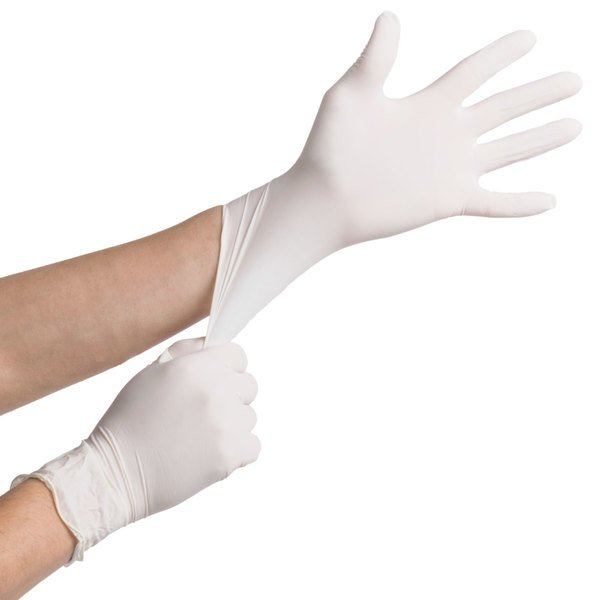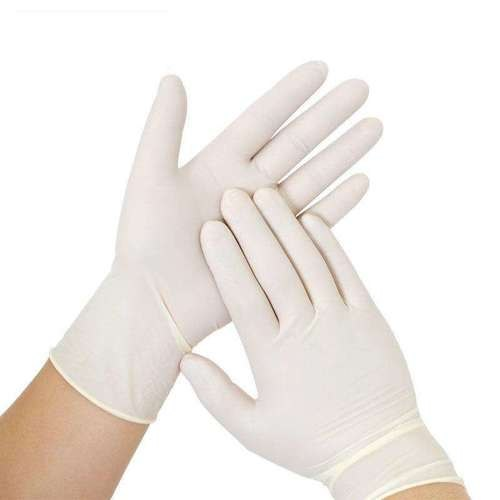2021/08/23 / By hqt / Tags:
9 Checkpoints before Buying New Latex Gloves in 2021
Have you ever wondered why the latex gloves you are using are corroded so quickly by chemicals? Then you ask the seller for advice but you only get very general answers like advice to choose a thicker glove. Your problem may not be in the thickness of the glove but in the material of the glove.

What to pay attention to when choosing latex gloves?
- The type of chemical that will come into contact
- Chemical concentration
- Chemical temperature
- Moreover, chemical exposure time
- Type of exposure – immersion in chemicals or splashes of chemicals
- Area to be protected – hand, forearm or even arm
- The dexterity that gloves support when the user manipulates objects
- Grip
- Size and comfortable feeling of the user
Criteria for choosing latex gloves
The most important criterion when choosing latex gloves is determining the type of chemical to be exposed. You should look in the product's SDS or MSDS to find out which chemicals are suitable for gloves. However, in practice, we will encounter cases of exposure to a mixture of many chemicals, and at that time we cannot determine what the chemical name after the reaction is.
Then we need to analyze that mixture to find the chemical to which the glove has the weakest resistance. Next, refer to the chemical's Permeation Breakthrough Time parameter for the glove. For example, chemical A + chemical B gives chemical C. If you have not determined what chemical C is, see the glove that is most resistant to chemical A or B.
What are Degradation Rating, Permeation Breakthrough Time and Permeation Rate?
When using the two online tools above of Ansell and Showa, you will encounter three important parameters. These are the three parameters commonly used by NSXs to evaluate latex gloves. Permeation test results when searching for “sulfuric acid” (50%) on Ansell website
Ø Degradation Rating
It is the evaluation of the degree of physical deterioration of gloves when exposed to chemicals. Contact with chemicals can cause gloves to expand, harden, and soften. This parameter is classified from the lowest level P (Poor) to E (Excellent).
Class P indicates that the glove has obvious deterioration in contact, class E indicates that the glove shows little change in contact. Note the two letters NR (Not Rated) meaning that NSX recommends not using gloves with this chemical.
Ø Permeation Breakthrough Time
It is the time from when the latex gloves are exposed to the chemical until the time when the chemical is detected on the inside of the glove. Showa calls this parameter Breakthrough Detection Time (BDT).
Ø Permeation Rate
This parameter represents the ability of the chemical to penetrate the glove surface without creating holes visible to the naked eye. To make it easier to understand, let's imagine the case of a balloon. When you watch the balloon fly you will notice that the size of the balloon will decrease over time.
Here, the glove is the balloon and the air inside the balloon is the contact glove chemical. Showa website does not show this parameter, I am not sure if Showa has tested this parameter.
Ø Note: Important points
There are a few things you need to pay special attention to:
- There are not perfectlatex gloves.
- Each type of glove is resistant to only certain chemicals.
- Do not use test results or parameters of NSX A and apply to NSX B gloves.
- Two glove models with the same construction material but different thicknesses give different results.
- Consider other factors such as the temperature of the chemical
- or the risk of the glove being cut or punctured when in contact with sharp objects.
- Inspect the glove surface before use. There may be holes or cuts from previous use.
- Do not use medical gloves that function as chemical resistant gloves.
- Medical gloves are too thin to provide the required time of protection.
- Find out more about the chemical you will be exposed to.
Why medical gloves are usually made of latex and nitrile?
There is no perfect pair of gloves for every job! Why? Because each type of glove is only suitable for certain jobs. The most obvious example is that most medical gloves on the market today are made of latex; latex gloves or nitrile, with no vinyl medical gloves at all. To help us choose the right type of medical gloves, I will analyze the basic advantages/disadvantages of each material as follows:
Ø Latex:
It is also known as latex rubber (from the rubber tree). Latex has the advantage of good elasticity, high tear resistance, creating a real feeling when holding. However, the puncture resistance and chemical resistance are not as good as other materials. The price of latex medical gloves is considered the general price of the medical glove market.
Ø Vinyl:
It is a cheap alternative to latex. However, in terms of elasticity, tear resistance is worse than latex. Vinyl gloves are often used in food.
Ø Nitrile:
These wear resistance, puncture resistance, chemical resistance are the outstanding advantages of nitrile. In the medical field, with its advantages, nitrile gloves are gradually replacing latex gloves. The cost of nitrile medical gloves is about 20% higher than these gloves (same weight) and the trend is decreasing.

Ø Neoprene:
Among gloves manufacturing materials, neoprene stands out in its chemical resistance, long service life and heat insulation ability. With these properties, neoprene gloves are often used as laboratory gloves. However, the price of neoprene gloves is currently very high.
Below is a more detailed description of the features of each type of medical glove:
| FEATURES \ MATERIAL | LATEX | NEOPRENE | NITRILE | VINYL |
| Anti-permeation | Excellence – latex gloves are the benchmark in penetration resistance. | Very good – similar to latex. | Excellent – Nitrile gloves have outstanding puncture and tear resistance. | Poor – Vinyl gloves are prone to punctures and tears. The tightness in the wrist is poor, so it also reduces the protection area. |
| Allergy | Depends – Latex contains proteins that cause allergies in a small portion of the population. However, powder-free latex gloves have very little protein content, so the risk of allergies is very small. | Excellent – Does not contain latex proteins. | Very Good – Contains no protein in latex. | Good – Vinyl does not contain proteins like latex. |
| Durability and longevity | Excellent – latex gloves have a long life and great stretch. Stretchability typically ranges from 3500 psi or higher. | Very good – Similar to latex but if punctured, it will easily lead to tearing from the puncture. Stretchability similar to latex. | Excellent – Nitrile gloves are more puncture resistant than all other gloves. The tensile strength is usually higher than 3000 psi. | Weak – Vinyl is a glove with poor physical properties and the worst life of all gloves. The tensile strength is usually just under 2000 psi. |
| Elasticities | Excellent – Latex's elasticity surpasses that of other gloves. The ability to maintain the original shape after stretching is also very good. | Excellent – The elasticity of neoprene gloves is not much inferior to that of latex. | Very good – The elasticity is quite good. Unlike latex, nitrile gloves will remember the size of the wearer's hand. | Poor – Vinyl gloves have poor elasticity and this property fluctuates depending on the manufacturer. |
| Anti-puncture | Very good – Latex gloves are very puncture resistant. | Good - Neoprene's puncture resistance is worse than nitrile and latex. |
Excellent – Nitrile's puncture resistance is superior to other gloves. |
Least |
Conclusion:
You see, choosing latex gloves is not simply choosing the thickest glove, but also having to consider many other factors. Hopefully the article will make it easier for you to choose chemical resistant gloves.


